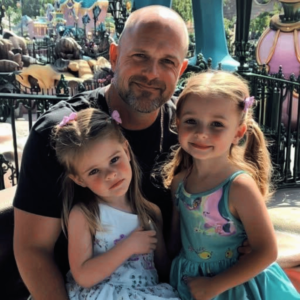
Tessa Evans, a girl born without a nose on Valentine’s Day in 2013, is cherished and admired by her family and individuals worldwide. Fewer than 100 people globally share her rare condition. Her mother commends Tessa for her delightful demeanor and unwavering bravery.
Now eight years old, Tessa exemplifies resilience, having been the first individual to receive nasal implants, and she refuses to allow her circumstances to hinder her pursuits.
Grainne and Nathan Evans were taken aback when their Valentine’s Day child arrived without a nose, as their pregnancy had progressed without any complications. Hailing from Maghera, Ireland, Tessa’s condition is attributed to Bosma arhinia microphthalmia syndrome (BAMS). According to the National Institutes of Health, fewer than 100 cases of this syndrome have been documented throughout medical history, making it particularly challenging to treat due to its rarity.
As a result of her condition, Tessa is unable to smell or breathe through her nose; however, she can still cough, sneeze, and catch colds. “It was amusing the first time she sneezed, but we learned that it actually originates from the chest,” her father, Nathan, remarked. “Nonetheless, experiencing that small aspect of normalcy was quite pleasant.”
Tessa faced significant challenges during her initial weeks, spending five weeks in intensive care. Before she reached two weeks of age, she underwent surgery to insert a tracheostomy tube, enabling her to eat and sleep more comfortably. At just two years old, Tessa became the first person to receive a cosmetic nasal implant to compensate for her congenital absence.
Individuals requiring a nose prosthesis typically undergo the procedure during their teenage years, coinciding with the cessation of facial growth.
Her parents explained that they opted for the surgery when she was young to minimize the need for more invasive procedures later in life.
“It was an incredibly challenging decision for all of us; we love Tessa dearly and believed she was entirely beautiful as she was,” Grainne remarked. “Ultimately, we chose to proceed, viewing it as an opportunity to gradually alter her appearance over the years and to normalize her profile without any surgical alterations to her face.”
As Tessa approaches her 13th birthday, the surgical interventions on her face will conclude, and Grainne reflects on the lengthy journey: “They indicate that once the final, intricately designed nose is in place, a medical tattoo artist will apply light and shadow to enhance the detailed contours of her nose.” She further noted, “They will also create dimples in the nostrils and shade them to achieve a realistic appearance.”
After making this difficult decision, Grainne, a mother of three, was determined to be present for every moment of her child’s recovery.
“It was quite stressful, as I had never spent a night away from Tessa, and it was heart-wrenching to leave her side each evening at 11 p.m.,” Grainne shared. “I found solace in knowing I was just a phone call away and could reach her in a matter of minutes. Regardless of the circumstances, I would be there when she awoke the following day. That was a true blessing.”
Throughout the years, the donation process has presented challenges, including the removal of one implant. Nevertheless, Tessa, now 10 years old, remains resilient and joyful.





